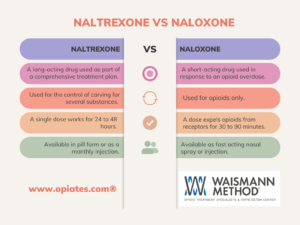
Safe Usage of OTC Drugs: Essential Tips and Guidelines
Welcome to your comprehensive guide on safely navigating the world of OTC (over-the-counter) drugs. In this essential read, we dive into critical tips and strategies
The side effects from any prescription pain medication can be uncomfortable. Medications containing buprenorphine come with information regarding use, appropriate dosage, warnings, possible interactions and Buprenorphine side effects. To emphasize, it’s important you read this information in its entirety so you know what to expect and how to avoid complications. Medications such as Suboxone (buprenorphine and naloxone) and Subutex, contain buprenorphine. It’s a partial opiate agonist physicians prescribe to treat opioid addiction. Although it is an opioid and can produce typical side effects such as respiratory depression and euphoria, its effects are thought to be less than full opioid agonists like heroin and methadone. This allows patients to stop using opioids while avoiding withdrawal symptoms. Buprenorphine can become physically and/or psychologically addicting, causing the need for a second detox.
Speak Confidentially
with an opiate detox treatment expert.
The side effects associated with buprenorphine are similar to those caused by other opioid medications. Henceforth, individuals that use prescription painkillers commonly report constipation as a side effect. Whether taking opiates at therapeutic levels or abusing them, many users report sluggish bowel movements, a condition that can be both annoying and painful. Whereas, patients taking a combination of prescription medications may exhibit compounded symptoms. In spite of short-term use, patients can still experience one or more side effects. For example, they can include:
Moreover, combining opiates with alcohol and some other drugs can also lead to severe reactions. More serious side effects can include severe respiratory depression, confusion or stupor, coma, clammy skin, circulatory collapse and cardiac arrest.
The degree and frequency with which patients experience side effects depend on several factors. First, the amount taken can be one determining factor. Additionally, previous exposure to opiates can be a factor. Some users may build up a tolerance to prescription opiates, meaning the prescribed drug’s effects become diminished. Lastly, the method by which opiates are taken can also affect the physical and psychological symptoms experienced.
The Waismann Method of rapid detox has treated opioid dependence for over a decade using a safe and humane in-hospital procedure. Intravenous medications are used to cleanse buprenorphine and other opiates from patients’ opiate receptors while they are lightly sedated. This takes less than two hours and usually requires an inpatient commitment of 5 to 7 days. Above all, you don’t have to keep suffering from the Buprenorphine side effects anymore. Our accelerated detox provides patients with one of the highest success rate in the field of opiate detox, for almost 20 years. The Waismann Method of Rapid Buprenorphine Detox, treats addiction with advanced medical techniques and in a private, effective and humane manner. Our supportive and discreet program allows patients to return to their lives within days unless they opt to extend their stay in our recovery center Domus Retreat.
Speak With an Addiction Specialist
Exceptional Care & Better Outcome. Get In Touch With Us Today!
What's New at Waismann Method®

Welcome to your comprehensive guide on safely navigating the world of OTC (over-the-counter) drugs. In this essential read, we dive into critical tips and strategies

Substance use disorders (SUDs) and mental health issues share a complex relationship, often intertwining and amplifying each other’s effects. In this blog, we delve into

In the realm of opioid addiction treatment and emergency overdose reversal, Naltrexone and Naloxone stand out as critical medications. Although both belong to the opioid



Get Newsletter Updates from Waismann Method®
"*" indicates required fields
We are available 7 days a week
DISCLAIMER: The text presented on this page is not a substitute for professional medical advice. It is for your information only and may not represent your true individual medical situation. Do not hesitate to consult your healthcare provider if you have any questions or concerns. Do not use this information to diagnose or treat a health problem or disease without consulting a qualified healthcare professional. Be advised that Opiates.com articles are derived from various sources and may not reflect your own country’s regulations.